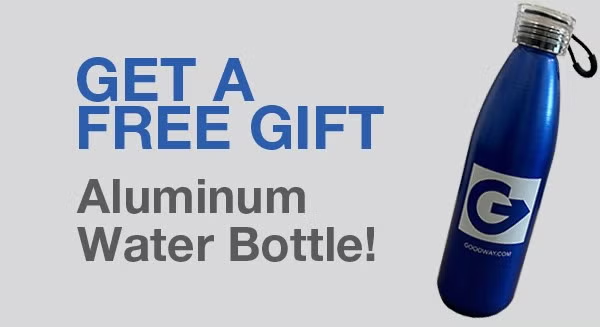Nothing to Sneeze At: How to Remove Allergens from Food Processing Equipment

Remove Allergens from Food Processing Equipment With the Correct Tools
Peanuts. Soy. Milk. Eggs. Fish. Shellfish. Tree nuts. Wheat. Chances are you or someone you know is allergic to one or more of the big 8 food allergies. Well, guess what? This list has grown and is now nine, with the addition of sesame.
An allergic reaction can be mild, such as congestion and temporary swelling, or moderate, like abdominal pain that passes. In the worst cases, an allergic reaction can be life-threatening.
Removing allergens from food processing equipment, especially within bakeries and candy manufacturers, can be both a moral obligation and a big business opportunity. However, if not efficiently implemented, the process can be costly in terms of downtime for equipment.
"CIP, meaning clean-in-place, is really important," says Evan Reyes, Product Specialist for the food industry at Goodway Technologies. "To be cost-efficient, you have to remove 100% of the allergens without removing conveyor belts and dismantle the equipment. There's virtually no other way to ensure product purity and produce an affordable product," says Evan.
Evan recommends a two-step approach. "Our industrial HEPA filtered vacuums capture food particles down to the micron level," he says. "Once it's in the vacuum, it's not getting back into the production environment."
Evan stresses that though one vacuum can capture multiple allergens, you can't use one set of attachments. "You have to dedicate one set of attachments for one allergen," he explains. Processing plants will typically color-code or label attachments for specific uses. "You can't use an attachment that's been used on peanuts to vacuum up wheat," he cautions. "You typically will also have dedicated attachments for floors and for walls."
The next step involves dry vapor steam cleaning any conveyor belts that transport food through the plant. "I've seen conveyor belts that are literally a mile long. Imagine what kind of a project that would be to remove for cleaning," Evan says. "CIP is essential for any belt cleaning - large or small."
Goodway offers a unique solution for conveyor belt cleaning. The solution includes a manifold that sits over the conveyor belt. The attachment first projects a line of dry steam to loosen stuck-on food particles. It then has a vacuum line that connects to the HEPA filtered system to remove the loosened debris. The dry steam cleans and sanitizes the belt; the simultaneous vacuum extraction removes any loosened particles.
"This technique has been proven in the market to be an effective way to remove peanut, soy, and egg allergens from flat, solid, homogenous, polyurethane belts," explains Evan. A belt typically requires six complete passes for cleaning. "We've cleaned shorter belts in five minutes," Evan says. A longer belt may take up to 30 minutes to clean, depending on the length of time that the belt takes to make six circuits.
"Your customers rely on accurate product labeling," says Evan. "Goodway Technologies helps you be 100% accurate and cost-efficient simultaneously."



